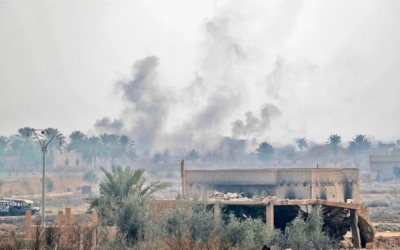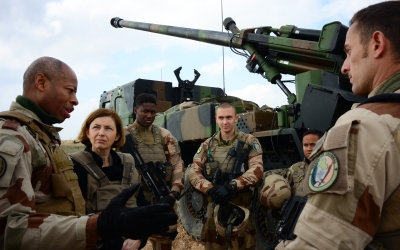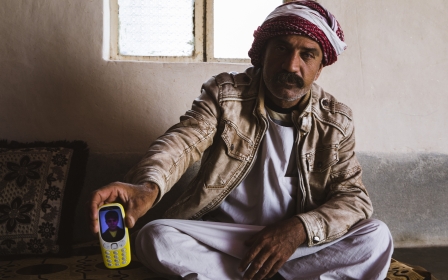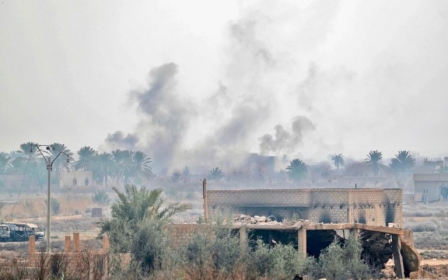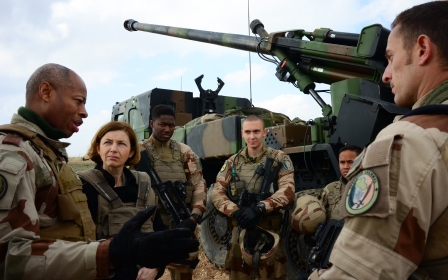Final Islamic State village 'within firing range', says SDF commander
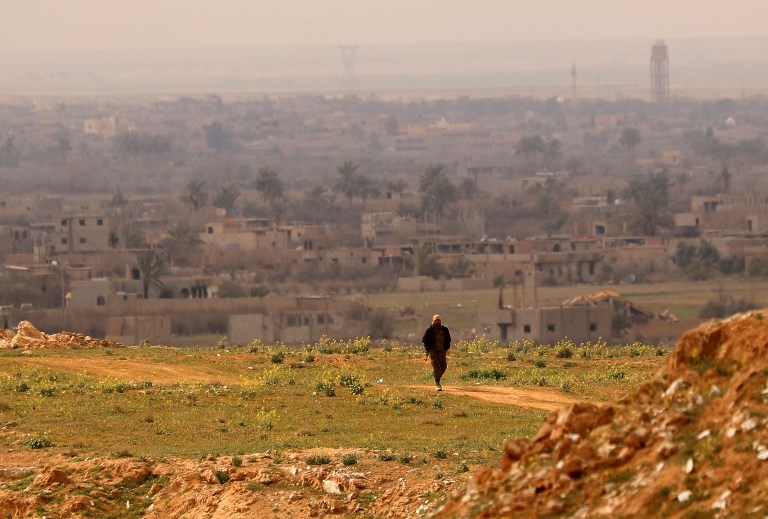
US-backed fighters in Syria are poised to capture the Islamic State (IS) group's last, tiny enclave on the Euphrates, the battle commander said on Saturday, bringing its self-declared "caliphate" to the brink of total defeat.
US President Donald Trump had announced that the fall of the IS proto-state would be declared on Saturday, but the Syrian commander said his US-backed forces slowed down their advance against the village of Baghouz to protect civilians.
"In the coming few days, in a very short time, we will spread the good tidings to the world of the military end of Daesh," said Syrian Democratic Forces (SDF) commander Jia Furat, using the Arabic acronym for IS, as quoted by Reuters.
"Baghouz is within our firing range, but we are moving cautiously considering there are civilians still trapped there as human shields," said Furat, the overall commander for the operation.
"IS is besieged in a neighbourhood that is estimated to be 700 metres long and 700 metres wide," Furat told reporters at a nearby SDF base.
New MEE newsletter: Jerusalem Dispatch
Sign up to get the latest insights and analysis on Israel-Palestine, alongside Turkey Unpacked and other MEE newsletters
Hundreds of metres from the front line in the village of Baghouz, an AFP reporter heard artillery fire and two air strikes on the militant holdout.
Huge craters had been blown out of the ground, and the road was lined with destroyed buildings and the skeletons of burnt-out cars.
Though IS militants still hold out in a pocket of central Syria's remote desert and have gone underground as sleeper cells in Iraqi cities, able to launch new attacks, their territorial rule is, for now, almost over.
It ends a project launched from the great mediaeval mosque of Mosul in northern Iraq in 2014, when Abu Bakr al-Baghdadi seized advantage of regional chaos to proclaim himself caliph, suzerain over all Muslim people and land.
He set up a governing system with courts, a currency and flag that at its height stretched from northwest Syria almost to Baghdad, encompassing about two million inhabitants.
But the group's reign of terror over minorities and other perceived enemies, marked by massacres, sexual slavery and the beheading of hostages, drew a forceful international military response that pushed it steadily back from 2015.
Thousands of people have flooded out of Baghouz over the past week - mostly women and children related to IS militants.
The SDF also said dozens of IS fighters had surrendered to its advancing forces.
The Kurdish-led SDF fighters are busy clearing improvised explosives from the area while staying on the lookout for any IS suicide bombers.
Human Rights Watch called on commanders not to try to accelerate the offensive to suit Trump's timetable.
"The tempo of battle must not be dictated by political imperatives - it must first of all protect civilians and possible hostages," HRW's director of counterterrorism, Nadim Houry, said.
The Kurdish-Arab alliance has been closing in on the diehard militants since September.
The speck of terrain in Baghouz is all that is left of IS territory that once spanned an area the size of the United Kingdom.
It has taken years of devastating fighting by various forces across both Iraq and Syria to shatter the group's "caliphate".
Trump's promise of a victory declaration came after he shocked allies and senior figures in his own administration with a December announcement ordering a full US troop withdrawal from Syria because IS had been "beaten".
That plan, which prompted the resignation of the then defence secretary Jim Mattis, is set to be accelerated following a victory announcement.
Beyond Baghouz, IS still has thousands of fighters and sleeper cells scattered across several countries.
In Syria, it retains a presence in the vast Badia desert, and has claimed deadly attacks in SDF-held territory.
A US withdrawal risks leaving Syria's Kurds exposed to a long-threatened attack by neighbouring Turkey, who views Kurdish fighters as "terrorists".
Turkey, which regards the SDF's strongest component, the Kurdish YPG, as terrorists, has threatened to march deeper into northern Syria to drive it back.
To prevent this, the SDF has scrambled to seek a new ally in the Damascus government after spending most of Syria's civil war working towards self-rule.
Eight years into the conflict that has killed more than 360,000 people, President Bashar al-Assad's government controls nearly two-thirds of the country.
On Friday, US Army General Joseph Votel, who oversees US forces in the Middle East as head of Central Command, said the end of the territorial caliphate would lead to a more dispersed, harder-to-detect network of fighters waging guerrilla warfare.
That should require continued help from Washington, he said.
Middle East Eye delivers independent and unrivalled coverage and analysis of the Middle East, North Africa and beyond. To learn more about republishing this content and the associated fees, please fill out this form. More about MEE can be found here.


